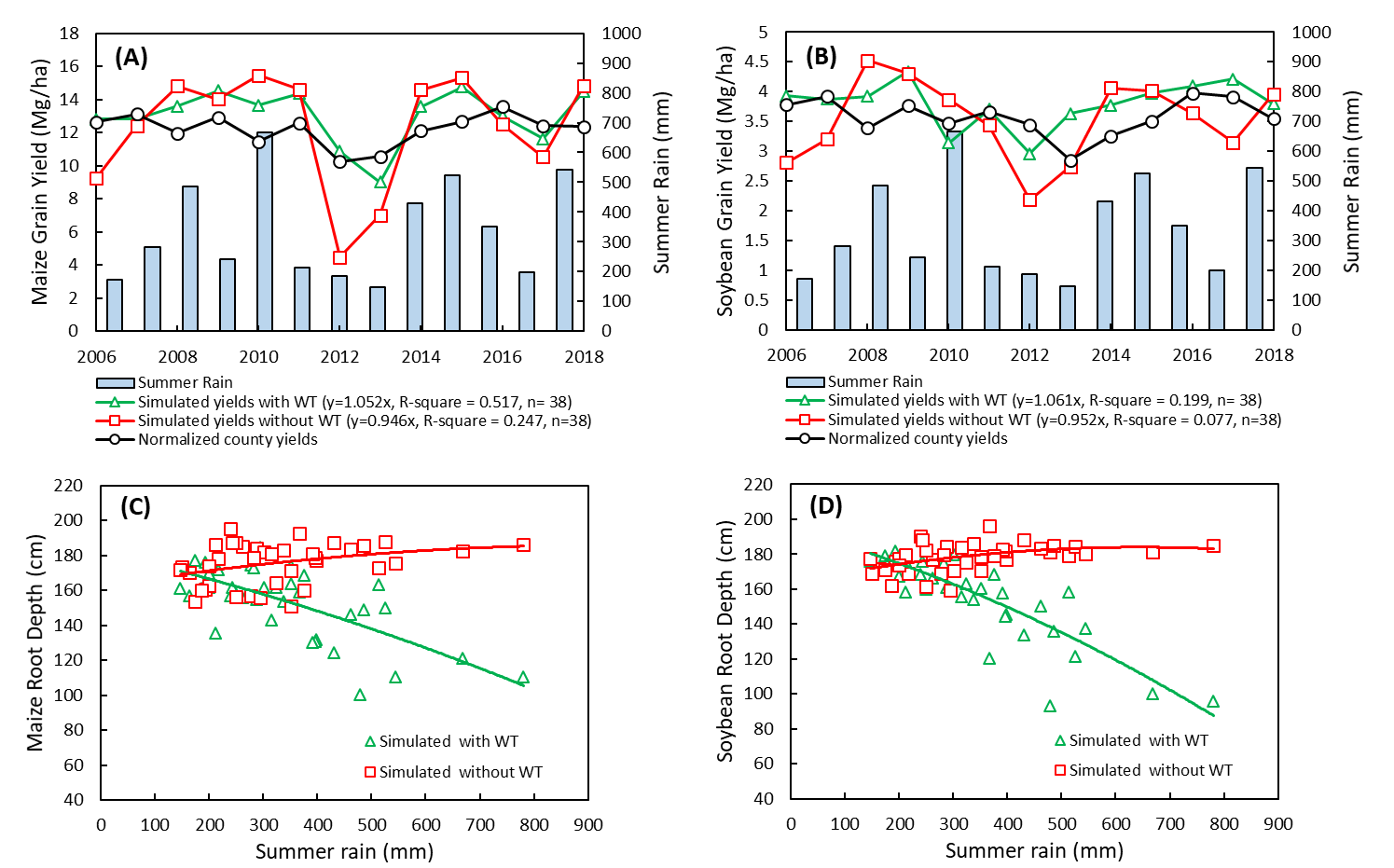Predicting crop yields and soil-plant nitrogen dynamics in the US Corn Belt
The authors used the Agricultural Production Systems sIMulator (APSIM) to predict and explain maize and soybean yields, phenology, and soil water and nitrogen (N) dynamics during the growing season in Iowa, USA. Historical, current and forecasted weather data were used to drive simulations, which were released in public four weeks after planting. The paper (1) describes the methodology used to perform forecasts; (2) evaluates model prediction accuracy against data collected from 10 locations over four years; and (3) identifies inputs that are key in forecasting yields and soil N dynamics.
They found that the predicted median yield at planting was a very good indicator of end-of-season yields. The good prediction at planting time was explained by the existence of shallow water tables, which decreased model sensitivity to unknown summer precipitation by 50–64%. Model initial conditions and management information accounted for one-fourth of the variation in maize yield. End of season model evaluations indicated that the model simulated well crop phenology (R2 = 0.88), root depth (R2 = 0.83), biomass production (R2 = 0.93), grain yield (R2 = 0.90), plant N uptake (R2 = 0.87), soil moisture (R2 = 0.42), soil temperature (R2 = 0.93), soil nitrate (R2 = 0.77), and water table depth (R2 = 0.41). The model set-up by the user (e.g. inclusion of water table), initial conditions, and early season measurements are very important for accurate predictions of soil water, N and crop yields in this environment.

Simulated (1980-2018) yield and root depths with and without water table in central Iowa. Normalized (genetic and management effects were removed from the 1980-2018 period) NASS maize and soybean yields for the Boone county, Iowa are also included for comparison.
The full paper can be accessed here: https://acsess.onlinelibrary.wiley.com/doi/full/10.1002/csc2.20039
